Momentum
The linear momentum of a particle is a vector quantity obtained by multiplying the mass of an object by its velocity.

Momentum has units kg m/s or Newton seconds ( N s)
Newton's second law states that the rate of change of momentum of a body is directly proportional to the force applied, and this change in momentum takes place in the direction of the applied force.
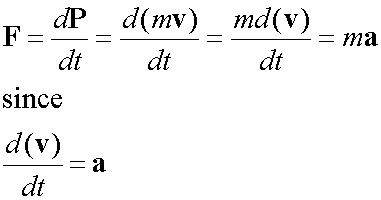
A force acting on a system affects its momentum.
If there is no net external force, there is no change in momentum.
If an object changes velocity, its momentum will change.
Example

An elephant with a mass of 5,000 kg changes his velocity from 2 m/s to 4 m/s in the same direction. What is the change in his momentum ?
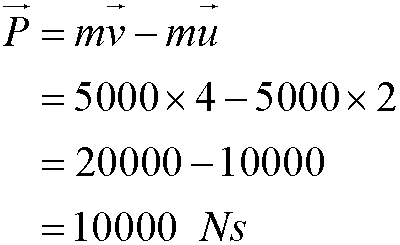
Impulse
Impulse (J) occurs when a constant force acts over a time interval.
so Impulse = Force x Time
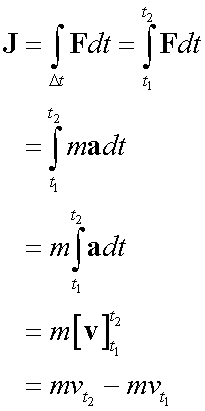
Impulse is the change in momentum.
Example
A force of (5i + 10𝒋) newtons acts on a body of mass 10 kg for 4 seconds. The body was initially moving with a constant velocity of (2i -7j) m s-1. Find the final velocity of the body in vector form, and hence obtain its final speed.
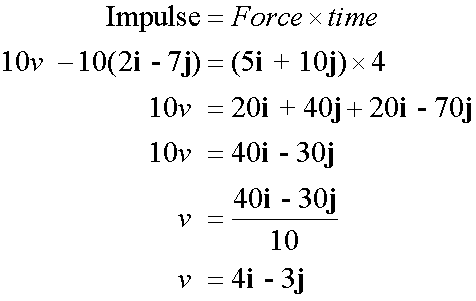
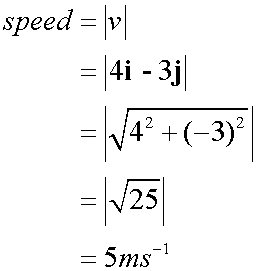
Conservation of Momentum
Newton's Third Law states:
All forces between two objects exist in equal magnitude and opposite direction: if object A exerts a force FA on object B, then B simultaneously exerts a force FB on A, and the two forces are equal in magnitude and opposite in direction: FA = −FB
so FA + FB= 0 , so there is no net change in force, so there is no change in the total momentum of the system.

If u =intial velocity and v = final velocity
![]()
and for a two part system before a collision

In an elastic collision, both momentum and kinetic energy are conserved.
In an inelastic collision, only momentum is conserved. Some kinetic energy is transferred into another form, e.g. heat or sound.
In a completely inelastic collision, the objects stick together.
Some scenarios
1) A ball hits a stationary ball of equal mass.

collision occurs
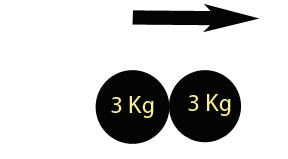
one ball remains stationary
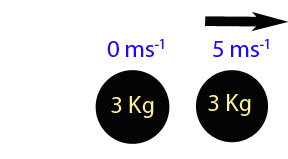
2) A ball hits a lighter stationary ball.
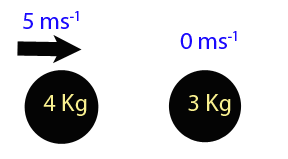
collision occurs
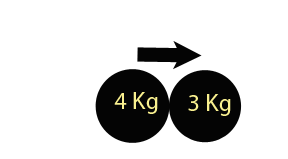
both move
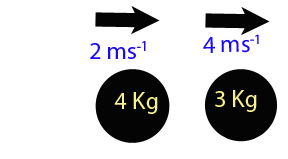
3)A ball hits a lighter stationary ball.

collision occurs

the balls stick together
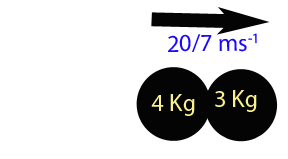
Example
A bullet of mass 20 grams, travelling at 80 ms-1, hits a stationary block of wood of mass 4 kg which is free to move on a smooth, horizontal plane. Use the conservation of linear momentum to calculate the final speed of the block, given that the bullet passes right through the block and emerges with speed 20 m s-1.
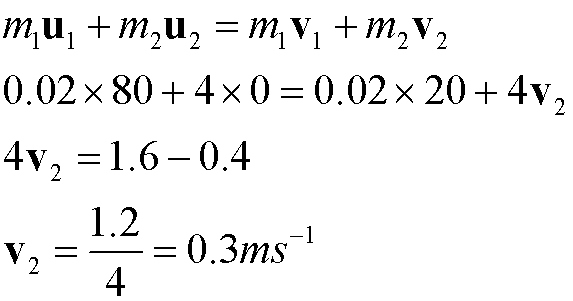
Speed is the modulus of velocity, so the speed is 0.3 ms-1
Example
A body (E) of mass 6 kg is moving with velocity (−2i+5j) ms-1 when it collides with a body (F) of mass 10 kg moving with velocity (3i+6j) ms-1 . Immediately after the collision the velocity of E is (3i+2j) ms-1 . Find the velocity , v, of F immediately after the collision.
before
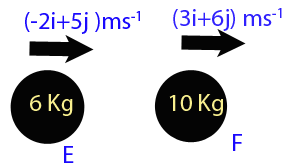
after
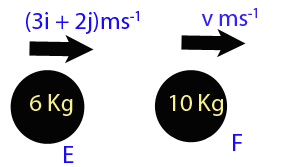
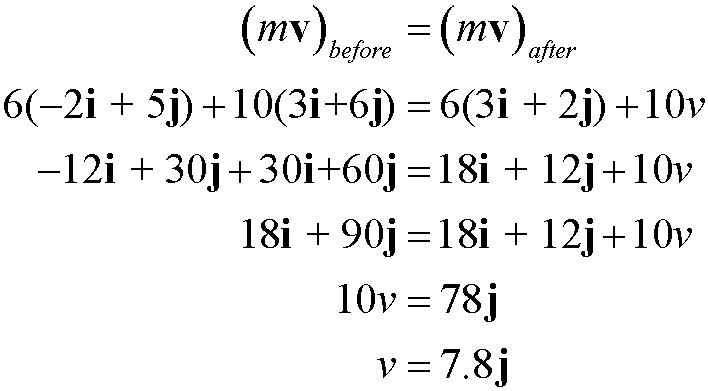
Hooke's Law
Robert Hooke discovered that the force from a spring is proportional to the displacement of the free end from its relaxed state position.

The constant, k, is called the spring constant and measures the stiffness of the spring.

A force acts to restore a spring to its relaxed state, where it is neither extended nor compressed.
Relaxed state - no force.
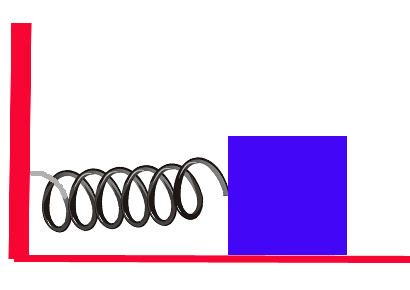
Compressed state
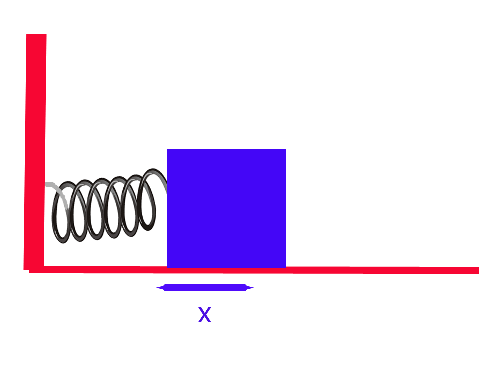
The spring has been compressed x units to the left.
Since x is negative, the force experienced is positive.
Extended state
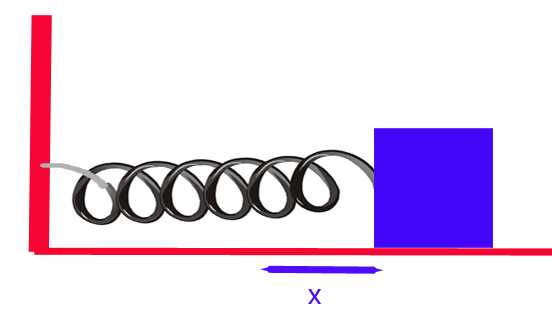
The spring has been compressed x units to the right.
Since x is positive, the force experienced is negative.
When used as a restoring force, Hooke's Law can be written
![]()
Hooke's Law can also be expressed as

Where T is the tension, x is the extension, l is the natural length of the spring and λ is the modulus of elasticity of the string.
Work Done
Work is done when there is displacement of a point of application of a force in the direction of the force.
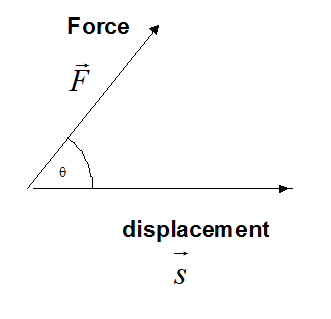
Work done by a constant force
![]()
Work is scalar, with SI units Joules (J), yet Force and displacement are vectors.

but
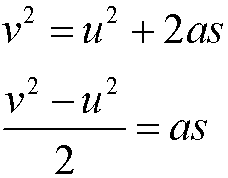
so
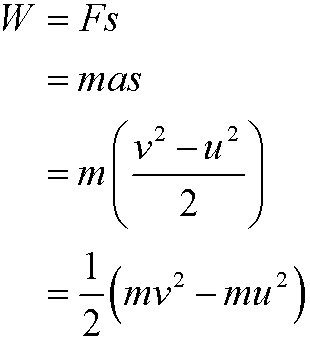
But kinetic energy is
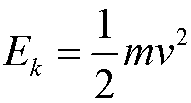
so
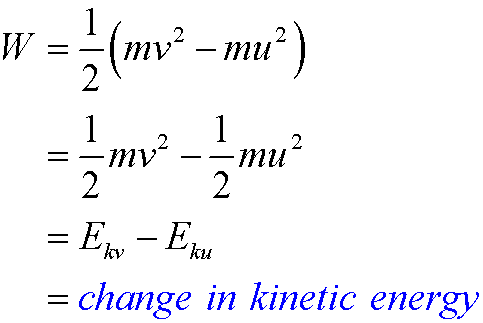
The work done on an object by a net force equals the change in kinetic energy of the object.
Power is the rate at which a force does work on an object.
If a force F does work W during a time interval Δt,
then the average power due to the force over the time scale is

At any particular point of time ,
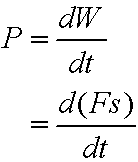
but the force is constant and

so
![]()
If the direction of the force is at an angle θ to the direction of travel of the object,
![]()
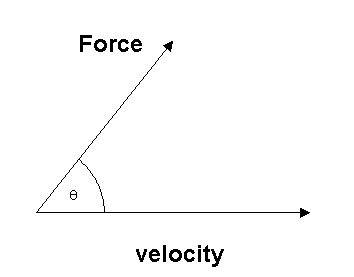
then instantaneous power is
![]()
Example
Doggo decided to be lazy and accepted a lift from a pleasure boat.

The tow rope exerts a force of 50 N on the kayak
at an angle 60˚ to the horizontal.
If the instantaneous power is 100 W, what is the magnitude of the
velocity of the kayak ?
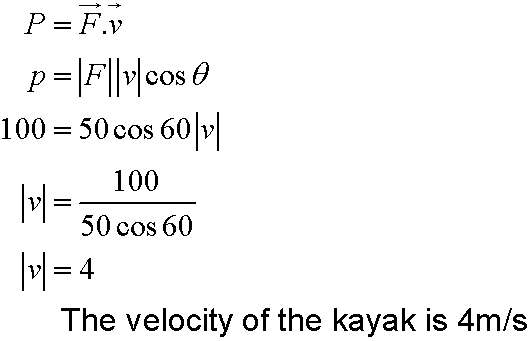
Kinetic Energy
For a body of mass m moving at a speed (or magnitude of velocity) v,

or

Looking at this from the point of view of momentum,
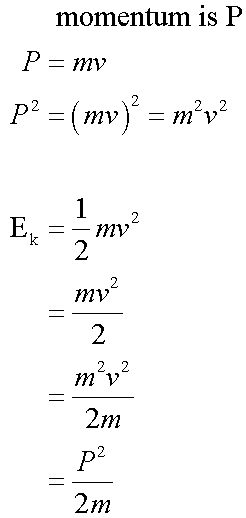
so

Kinetic Energy is defined as the work needed to accelerate a body of a given mass from rest to its stated velocity.
![]()
so

Giving
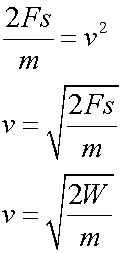
and
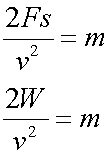
Potential Energy
![]()
or
![]()
The change in potential energy is
![]()
where the negative value shows tht work done against a force increases potential energy.
For one dimensional motion,

The Principle of Conservation of Energy
In a system where no work is done against friction and gravity is the only external force which does work on a body :
![]()
